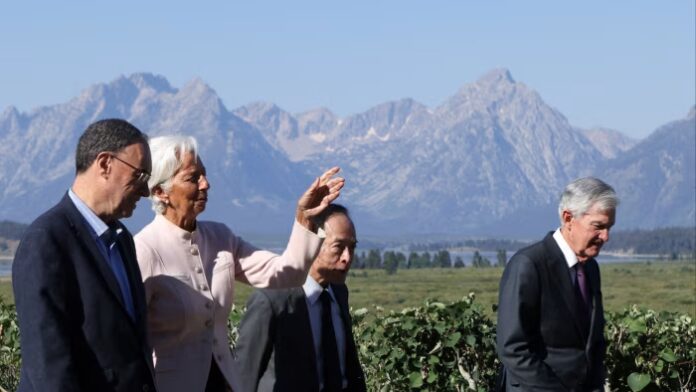Stay informed with free updates
Simply sign up to the Monetary policy myFT Digest — delivered directly to your inbox.
The writer is a former central banker and a professor at the University of Chicago
The roots of most financial crises lie in the boom times and the easy monetary conditions that precede them. For the majority of the big ones in the past 100 years, the trigger has been a change in monetary conditions from easy to tight — the easier conditions have been, the greater the accompanying credit expansion and the worse the economic outcomes in the subsequent recession.
Central bankers understand this phenomenon instinctively, but are often unwilling to accept responsibility for it. They invoke the “separation principle”, whereby monetary policy focuses on containing inflation by constraining demand, while regulation, supervision and more-recently minted macroprudential tools target concerns about financial stability.
Some of this blinkered view can be seen in the Barr report into the Silicon Valley Bank crisis in 2023. While questions were asked about the supervisory, regulatory and management failures that led to the second, third and fourth largest bank failures (in dollar terms) in US banking history, none were asked about the easy monetary conditions that made the system vulnerable to the subsequent tightening in the first place.
Such focus on supervisory and macroprudential tools is akin to the authorities pressing on a weak brake with one foot while the other steps down firmly on the monetary accelerator. It is ineffective, in part because so much financial activity now takes place outside the banking system, where supervision is far lighter, if it exists at all.
Moreover, financial innovation in boom times allows activity to skirt existing regulations, while the increasingly distant memory of past crises increases the political pressure to deregulate further. As the former US Federal Reserve governor Jeremy Stein put it, there is one important benefit of using monetary policy to offset growing prospects of financial instability — “that it gets in all of the cracks”.
Is this time different? After all, we have been through a tightening cycle in Europe and the US with little apparent damage — that is, if you ignore the collapse of Credit Suisse in Europe, or the SVB crisis with its accompanying run on 22 banks halted only by the extraordinary firefighting measures implemented by the Fed. Further damage stemming from earlier private sector borrowing was significantly reduced by the immense fiscal transfers and credit easing during the pandemic, which gave firms the ability to weather the subsequent tightening.
But at this point, central banks around the world are again in easing mode, perhaps in part nodding to political pressure. Should they worry? Yes, for at least four reasons.
First, broader measures of US financial conditions have eased throughout the Fed’s tightening phase, driven in part by the extraordinary growth in private credit in recent years. This suggests the excesses have not been squeezed out of the system, and will only grow again from a high level as monetary accommodation increases.
Second, aggregate demand — driven in the US by the artificial intelligence-related capital spending boom and robust consumption supported by the still-resilient labour market; in Europe by growing defence spending and Germany’s fiscal expansion; and in Japan by the prospect of yet more fiscal easing — has not weakened. When set against supply constraints from lower immigration, this may require policy rates to stay higher for longer, or even go up. Financial markets do not seem to be putting a lot of weight on these possibilities, which will only increase the costs if they do materialise.
Third, policy and economic uncertainty has increased. US trade policy shifts seemingly on a daily basis, and with it the possibility of further Chinese retaliation. There is still little clarity about what Europe and Japan’s promises to invest in America actually mean. A resumption of trade wars cannot be ruled out. Furthermore, the growing expectation that AI will provide a huge productivity boost may increase the geopolitical importance of control over Taiwanese chip production. Hot wars are no longer unthinkable in the not-too-distant future. Of course, a significant postponement of the bounties associated with AI would also be damaging, given the valuations and investments that depend on it.
Finally, government fiscal space is far more limited than before the global financial crisis or even the pandemic. Central bank intervention to rescue a financial system can lack credibility when the government does not have the resources or political capital to fund large bailouts. Crises and their consequences could be harder to arrest or absorb.
As the major central banks trade off growth and inflation in deciding their current monetary stance, they would be wise to acknowledge that the world simply cannot afford another financial crisis. Recognising that the roots of previous crises often lie in prior monetary accommodation, they should also now be taking financial stability into account. And central bankers ought to add fuelling the current financial exuberance with excessive easing to their worry list.
Join FT columnists Chris Giles and Katie Martin in conversation with former Fed vice-chair Lael Brainard on October 23 1200 GMT for an exclusive subscriber webinar Markets on edge: central banks, bonds and the risks ahead. Register now and put your questions directly to our panel
Source link





